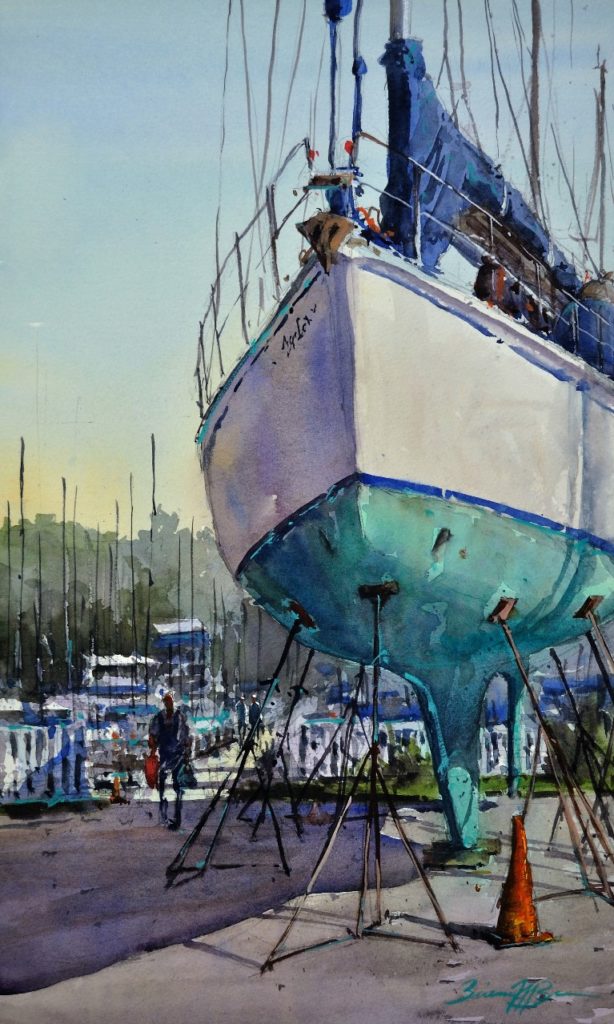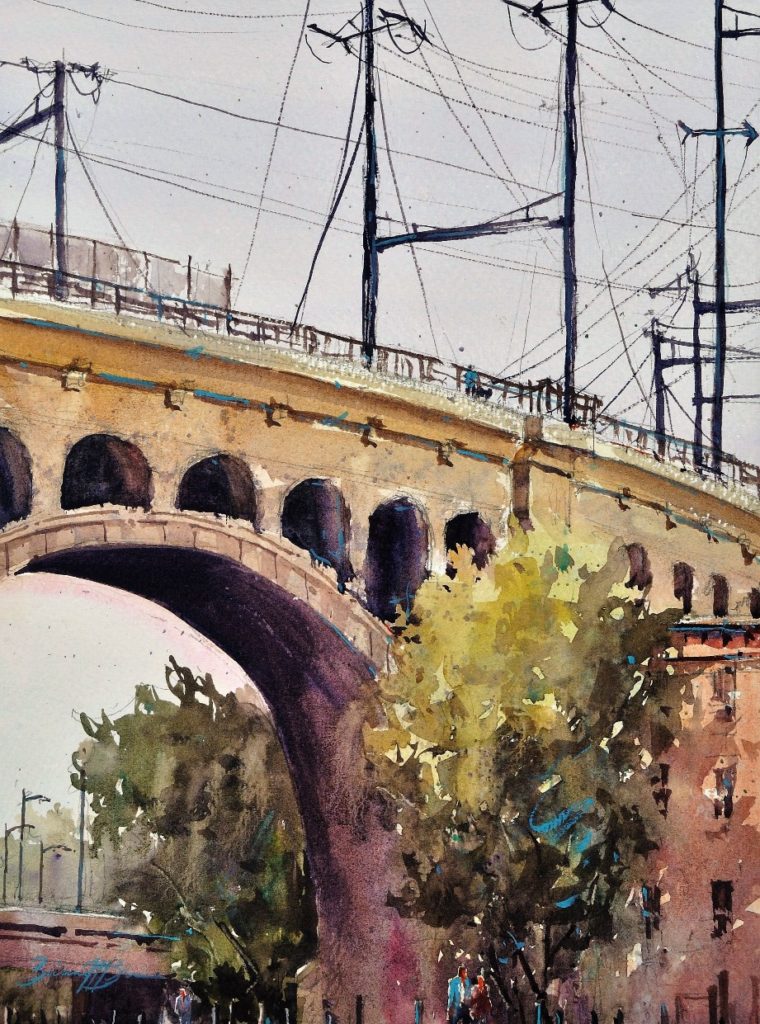This Pennsylvania watercolor artist is looking forward to her annual “shot in the arm” at the Plein Air Convention & Expo (PACE). What does she mean by that?
“There are a lot of good things about going to a convention like PACE,” says Brienne M. Brown. “Number one is the connections you make and the new friends you get. It’s energizing. I used to be in the sciences; I majored in chemistry. And I can tell you, it’s the same at a chemistry convention. It’s a bunch of nerds getting together where you can talk shop and no one is getting bored. It’s really important for anybody to get together with like-minded people and talk, no matter what you do. For me, it’s a shot in the arm, for the rest of the year.”

Brown reveals that she does have one hope for the convention: She wishes to get more watercolorists like her out in the field. Yes, the weather impacts a watercolorist more than it does an oil painter, but the difference is small, considering how watercolorists are used to that mercurial medium.
“From my experience with plein air, getting out and painting from life has helped my art immensely,” Brown says, “so the takeaway I hope to give people at PACE is how important it is to paint from life, even if you never show anybody your finished product. When I started to do it more, it definitely helped my work in and out of the studio. I would specifically love to get more and more watercolorists out there painting en plein air. I may be biased, but I think watercolor is the perfect medium for outdoor painting. There are no solvents — if you forget water, find a stream. It’s very portable.”

The painter also plans to discuss her process. Brown values watercolor’s spontaneous feel, and pays careful attention from start to finish to preserve its nature. “I start out letting watercolor do what it wants to do in the beginning,” she says. “I call it ‘slightly controlled chaos.’ It’s best to be adaptable with this medium,” she adds with a laugh. “I always start out with a plan, and with a value study, but if the watercolor is looking better than my plan, then I let it go. I start out wetter, looser, and with more color. As more layers go down, then darks go in and details come in. Then it is a personal choice on how detailed you want the work to be.”

“I like to stop when things are beginning to make sense,” she says. “I keep adding to it until I don’t think it’s going to make it better. A lot of times I do push it too far. I definitely try to have more of my detail in the focal area. After I’ve done the first wash — the first block-in — I will often start with the focal area, and not exactly finish it, but enough to know how to treat the background. Watercolor is both more spontaneous and more unforgiving in terms of overworking. The more you work it, the worse it gets. But on the other hand, even if you are not sure if it is working — and every painting goes through that stage — get it at least 80 percent done before you decide if it is going to work or needs to be scrapped. If it does need to be scrapped, just get a new piece of paper and try again. It’s hard because most artists want to just fix what they have.”

Buildings figure prominently in Brown’s work, and she notes that she grew up loving architecture. Her dad was a historical architect. A look at her paintings shows plumb and level lines. She must have hands like a surgeon.
Nope.
“I am drawn to cities and towns, especially old little towns,” she says. “I love to paint buildings. But I cannot draw a straight line. My dad doesn’t need a ruler to paint a perfectly straight line. I don’t use one — I have ways I have learned to deal with that. In a way, I like lines to have a little more character to it. If I need to draw a long line in a pencil underdrawing, I will draw a third of it, then the next third, then the rest. And then in paint, I do it all in one go, try my best, and don’t try to fix it. The more you fuss with it, the bigger the line gets, and it just becomes less interesting. The pencil lines help to guide me.”

Viewers may note Brown’s signature on her watercolors. She has a reason for the colors she chooses for that, but the very paint itself also sends the signal that she is not a strict traditionalist. “I like to do my signature in a mixture of transparent and opaque watercolor,” says the artist. “I am not a purist, using only transparent watercolor. I use an accent color for each painting, and I like to sign in that accent color. That accent color works because I like to use a lot of grays — I get very tonal — and the accent color just livens everything up.”

Brown will be instructing at the Plein Air Convention & Expo, which will be held April 24-28, 2019 in San Francisco, California. Have you seen the list of faculty members that will be instructing participants? Click here to learn more and to register for PACE.




